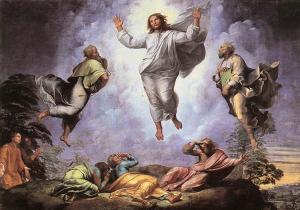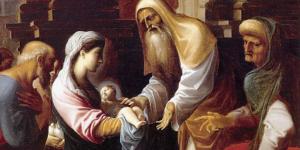
Praying the Glorious Mysteries of the Rosary on Holy Saturday was a little premature, but it seemed the right thing to do. It also reminded me to write this post.
Thinking back over the series of posts on the mysteries of the Rosary and reviewing the Scriptures these mysteries call up, I realize I have some favorites:
- Joyful Mysteries. The favorite has to be Mary’s Magnificat at the Visitation.
- Luminous Mysteries. Here it’s the Proclamation of the Kingdom — “This is the time of fulfillment. “
- Sorrowful Mysteries. Jesus carries the cross and my crosses become so much lighter: “Come to me, all who labor and are burdened….”
For the Glorious Mysteries I have too many favorites.
The missing mystery
I do have one complaint about this set of mysteries. The traditional mysteries were missing most of Jesus’ life until Pope John Paul II added the Luminous Mysteries. But there’s still something missing, and it belongs with the Glorious Mysteries. We pray for it every time we say the Our Father: “Thy kingdom come.” It’s the object of all our hopes. It’s the prayer at the very end of the last book of the Bible: Come, Lord Jesus. That’s a pretty big omission.
My dad, as he was getting on toward the end of his life, made this confession of faith before us, his son and daughters:
When I was younger (he said), I never thought about heaven. Now I think about it practically all the time.
This was a man who never separated his faith from his life in the world. That’s an example I try to follow. So I find I can’t separate my belief in heaven from my commitment to this world. This world, after all, is the place to which Jesus will return when God has finally made all things new.
The Glorious Mysteries of the Rosary are all about making the world new. They just don’t name the final stage. I didn’t have vocabulary to name it either in my earlier days of learning about the faith. The right words have more recently come into prominence. The Second Coming of Jesus is the “Parousia” (Greek for presence). That will happen at the “Eschaton,” the end of this age of the Church. We live in hope in the age between Resurrection and Eschaton. “Eschatology” is the recently prominent branch of theology that tries to fathom this great Christian hope.
The First Glorious Mystery, The Resurrection
A young man, clothed in white, said to the three women at Jesus’ tomb, “Do not be amazed! You seek Jesus of Nazareth, the crucified. He has been raised; he is not here; but he is going before you to Galilee.” (Mark 16:6-7)
Different Gospels tell the Resurrection story differently. Only a very literal modern age worries about conflicting details when the event itself is beyond what human minds can grasp. Here Mark seems to be using Galilee as a symbol for the work in this world Jesus expects of his followers. Galilee is where Jesus began his own work.
Other Bible texts for the Glorious Mysteries:
I am the Resurrection and the Life. (John 11:25)
Unless a grain of wheat falls to the ground and dies, it remains just a grain of wheat; but if it dies, it produces much fruit. (John 12:24)
The Second Glorious Mystery, The Ascension
Two men dressed in white garments said, “Men of Galilee, why are you standing there looking at the sky? This Jesus who has been taken up from you into heaven will return in the same way as you have seen him going into heaven.” (Acts 1:11)
Galilee comes into the picture here too. It names what these men are, creatures of earth; and Galilee would be one of earth’s least heaven-like places. We are all from Galilee, and we have work to do.
The Galileans may be thinking of what they have lost and if they’ll ever get it back, but what was truly theirs they still have, as the next mystery will show – Jesus’ Spirit among them.
John’s account of the Last Supper pictures the apostles confused about the way to go. Jesus says they already know the way:
I am the way and the truth and the life. (John 14:6)
The Third Glorious Mystery, the Descent of the Holy Spirit upon the Apostles
Through the prophet Joel, God says, “I will pour out my spirit upon all humankind. (Joel 3:1)
Luke’s Acts of the Apostles isn’t clear about who exactly was in the room when the Holy Spirit came down in wind and fire. The twelve apostles certainly, including Matthias, chosen to replace Judas. But there were women there, too, including Jesus’ mother, and the ones called simply Jesus’ brothers. This group symbolizes all of us.
Throughout the Old Testament and in the story of Jesus, when something new happens we see the Holy Spirit or something that has come to symbolize the Holy Spirit. Wind at the creation, a dove after the Flood, wind and fire as the Israelites escape slavery in Egypt. Again, in the New Testament: the Spirit overshadowing Mary at the Annunciation, the dove at Jesus’ baptism, and now fire and wind as the Church is born.
See, I am doing something new! Now it springs forth, do you not perceive it? In the desert I make a way, in the wasteland, rivers. (Isaiah 43:19)
The Fourth Glorious Mystery, the Assumption.
Arise, my beloved, my beautiful one, and come! For see, the winter is past, the rains are over and gone. The flowers appear on the earth. The time for singing has come, and the cooing of turtle doves is heard in our land. (Song of Songs 2:10-11)
I don’t understand why the Assumption of Mary bodily into heaven is a doctrine of the Catholic Church. It’s connected to another puzzling doctrine, the Immaculate Conception. Mary’s freedom from the stain of Original Sin makes it obvious that there could be no bodily decay for her. But Original Sin is another puzzle.
On the other hand, there could hardly be a doctrine better attested by the evidence than Original Sin. I don’t understand how sin could enter God’s entirely good world or why evil is usually easier than good and often more attractive. But it’s not because of how the world was built. Something obviously happened. And now I have to struggle with moral entropy.
For a glorified body there’s no entropy at all. The doctrine of the Assumption means at least this much: Bodies are beautiful, and God wants to share eternity with them.
The Fifth Glorious Mystery, the Coronation of Mary as Queen of Heaven.
A great sign appeared in the sky, a woman clothed with the sun, with the moon under her feet, and on her head a crown of twelve stars. (Revelation 12:1)
Here is where the Parousia should be, and instead we have a coronation. It’s not even a doctrine of the Catholic Church, and not exactly in the Bible, either. It’s easy to see the woman with the crown of stars as Mary, Queen of Heaven, but John, the apocalyptic writer, more likely saw her as the People of God.
Perhaps there is no disagreement here. The Catechism of the Catholic Church calls Mary “Eschatological Icon of the Church.”
In her [Mary] we contemplate what the Church already is in her [the Church’s] mystery on her own ‘pilgrimage of faith,’ and what she will be in the homeland at the end of her journey. (#972)
Mary and the Church both bring Christ to the world. Catholics call Mary and the Church their mother. The old spiritual “Down in the River to Pray” tells about the ones who will “wear the starry crown.” It’s all of us, brothers, sisters, sinners.
It’s not the Parousia by name, but just maybe the Coronation of Mary Queen of Heaven has a bit of eschatological flavor to it.
Image credit: Pinterest via Google Images












